Subscribe now and get the latest podcast releases delivered straight to your inbox.
Does your online marketing need a boost? Here is your ultimate guide to getting started with inbound marketing and start generating some "quick wins."
This article was developed from a presentation I did for the NAAIM Uncommon Knowledge Conference on 5/5/14 for Investment Managers. However, I decided to repurpose it into an article aimed at anyone whose online marketing consists of nothing more than having a website or the marketer with limited resources trying to take their program to the next level.
Update: Below is the slide deck from my presentation on May 5th, 2014.
Before we start, you need to know 2 things:
1. Understand your Customer and your Target Prospects
The most critical first step for implementing a successful marketing campaign is understanding who you’re trying to market to. Without knowing who you’re marketing to, you’re basically taking a stab in the dark at whether your marketing efforts will resonate with or even attract the right people. Everything you do, you need to picture your customer or your ideal prospect and focus on creating something that they would love and share.
At IMPACT, we have a customer-centric newsletter called the IMPACT Insider. By knowing our clients, we’re able to deliver marketing and messages to them that they love and share. This is a very easy way for us to get referrals.
When marketing to your customers and target prospects, try to understand the following basics:
- What are they researching online when looking for services like yours?
- How are they using search to do this research? (i.e. What are their search terms?)
- Where they get their information? (i.e. trusted resources)
- What social media accounts do they follow that provides information that you could provide them?
This is as basic as it gets when trying to understand your audience. When taking it to the next level, it’ll make sense to develop and implement buyer personas.
2. Content is the Key to Having Success Online
Creating high-quality content is essential to any successful inbound marketing program. Content is what your customers and target prospects consume. You can leverage content to prove your knowledge, experience, and personality. Content is anything online, including: blog articles, emails, videos, images, social media posts, pdf's, word documents, excel spreadsheets, reviews, comments, powerpoints, webinars, and just about anything else you can think of.
According to Google’s Zero Moment of Truth research, the average buyer consumes more than 10 pieces of content before making a purchase decision. “If your content is not part of that mix, odds are you will be left out of that process.”
The report adds that “content marketing may in fact be one of the best tools for customer acquisition.”
And the more content you have available online, the more opportunities you have to be found. More content means more search results, more visibility on social media, and more awareness. Yes, content takes time to produce, but has significant long term benefits.
15 Things You Can Do Today to Start Marketing Online Successfully.
1. Start a Blog
Since we know that content is key to any successful marketing strategy, we need an outlet to release this content. There is no better or easier way to do this than starting a blog. In most cases, blogs only take a few minutes to get started.
Once your blog is set up, you’ll have everything you need to start creating articles. Don’t waste any time, get your first article up there. Need help creating your first article? Follow these simple steps:
- Think about that story you are always telling people, you know, that one that you’ve told your customers and prospects a million times. Write that in 300 to 500 words. Rick Roberge does a great job of sharing articles about his stories and experiences and can be used as inspiration.
- Make your content readable. Break it up with sub headers, lists, etc. (Like this blog post.)
- Give your article a topic. To ensure that it gets read, do either one of two things:
- Match it up to what a prospect might type into the search engines, ie. “What is ______?”
- Give it an exciting title that increases the desire to read, ie. “5 Surefire Ways to ________ in 5 minutes or less”
- Publish and share. Once the article is live, it can be indexed with Google (usually automatically) and shared on social media.
Make sure you tell the people who would enjoy this article about it. The next time you’re about to tell that story again, mention your article. Send the link to the customers or prospects. This will help them to see you as a thought leader and if it’s really valuable, they’ll share it.
If you’re just getting started, don’t stress yourself out by trying to create blog articles all the time. It’s important that you just get started and create articles when you can. Obviously, the more articles you publish, the faster you’ll see results. But at first, focus on creating engaging content that your customers and prospects will love.
If it’s too hard for you to create blog articles, there are thousands of freelance writers available to help, many that specialize in your industry. Hire one. Many freelance writers will charge less than $35 for a blog article.

Here’s a great example of a remarkable blog title. Whether Doug Smith knows it or not, this blog title is optimized for search. People are Googling “How to retire with $1 million dollars.” If he continued to find topics like this and blog about them, he would certainly see his organic traffic (or traffic from search engines) improve.
It’s even optimized for social media. If this came across my news feed, even I may click on it. If the title was tweaked just a little more, perhaps to “Retiring with $1 million is easier than you think”, I’d be even more inclined to click on it.
As part of Doug’s blogging strategy, I would recommend that he repurpose the content of this article and continue to build more posts with the same information. Here are some more ideas:
- 7 Surefire Ways to Have $1 Million When you Retire
- Simple Savings Plan Every 40-Something Can Start to Have $1 Million for Retirement
- “How I Saved $1 Million for Retirement”
I’m sure Doug can find other topics and do the same thing. If he doesn’t have time to repurpose his content, he can write one article and hire a freelancer to repurpose it 10 times for him.

Brenda’s been creating content consistently for her firm, which is outstanding. A few tips I would have for her would be the following:
- Break up the content with more sub headers, lists, and bolded fonts in order to make the content more readable for her audience.
- Include internal links to other content she’s created or other subpages on her site.
- Include social media share buttons so visitors can easily share on Facebook, Twitter, and LinkedIn.
- Optimize the title to be either for search friendly or more attractive for social media. Perhaps “Should I Abandon Bonds? The Answer is…” Would work for both.
2. Repurpose Your Available Content
One of the biggest excuses for not creating content is time. However, you probably already have a ton of available content and you don't even know it. Here are some great places to find content that you already have:
- Long emails written to customers that can be modified / repurposed into blog articles.
- Content that was created by business partners available for use.
- Past powerpoint presentations.
- Tools or calculators you’ve developed using excel spreadsheets.
- Recorded speaking engagements.
- Text used in proposals or agreements that can be generalized.
- Facts, statistics, and quotes that we’ve come across.
- Checklists or guides you’ve developed to perform repeatable activities.
And I’m sure you can think of a lot more than just this. Any of this content can easily be modified, repurposed, and optimized into blog articles, whitepapers, SlideShare presentations, YouTube videos, and more.

I found this excellent piece of content on Parallel Financial Partners’ website. This is a gold mine for an inbound marketer. Parts of this document can be repurposed and turned into an endless supply blog articles, the graphics can be used as content to share on social media, and the document as a whole can be slightly modified into a lead generating gated piece of content (which I explain more about below).
 To the right is a feed that I found on Artesys website. I’m not quite sure what it means or how often this data is updated, but I’d imagine it’s of value to their target persona. How about taking a screenshot of it (like I just did) and using it as simple content that can be shared on social media with a description of what the viewer is looking at. Take it one step further by consistently writing short blog articles describing why this data is important.
To the right is a feed that I found on Artesys website. I’m not quite sure what it means or how often this data is updated, but I’d imagine it’s of value to their target persona. How about taking a screenshot of it (like I just did) and using it as simple content that can be shared on social media with a description of what the viewer is looking at. Take it one step further by consistently writing short blog articles describing why this data is important.
The amount of available content is endless, we just have to look for it.
3. Create a Consultation Page with Value
This section is particularly for businesses of all sizes that are consultative in nature, such as financial advisors, marketing agencies, sales consultants, insurance agents, etc.
- If someone asked you how you could help them, what would you say to them?
- If someone asked you for information about you that they can share with their friends, what would you send them?
- If someone asked what they would get by speaking with you, how would you describe the value of that engagement?
In most of the websites I see, this is not clearly defined. In fact, most people just have their email address or phone number on the site asking the viewer to contact them.
Where’s the value in that?
The best way to share this information outlined above is to set up a page on your site that clearly describes the benefits of talking to you. This way you’re clearly setting the expectations for the next steps while proving your value in exchange for their time.
When writing for this page, are you answering the following questions?:
- Are you speaking to their pain points? Is the viewer saying “That’s me!”? Having a strong understanding of your target prospect helps with this.
- Why should they talk to you and not the other guy? What makes you so much better?
- What if they decide not to hire you? Is it still worth their time to speak with you?
Other tips for the page:
- If the visitor will be speaking with you, include your picture. Again, this helps them understand their next steps.
- Use a form. This makes it easy for the visitor to contact you, but also ensures that you’re collecting the information you want from them. Think about the qualifying questions you’d normally ask and add them as fields on your form.
Know what you just did here? You built a very effective sales-ready landing page. We also call these bottom of the funnel landing pages.
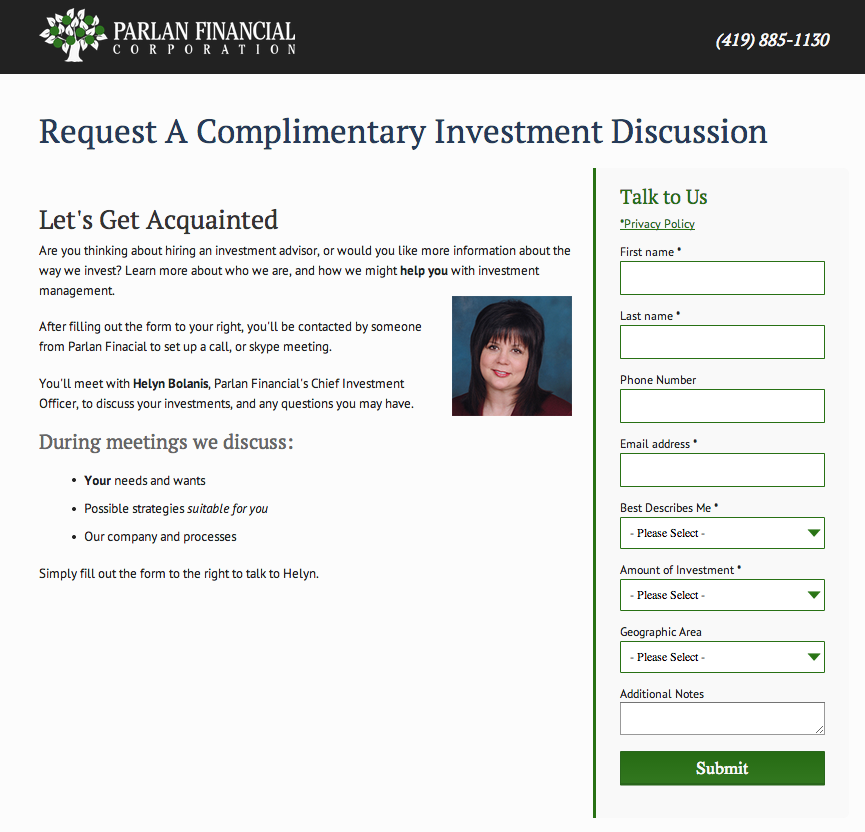
Here is an example of a personal consultation page we made for Helyn Bolanis of Parlan Financial.
4. Increase Conversion Points on Your Website
So you have some blog articles, people are finding and reading them, they’re good. You’ve made yourself look like a thought leader and prospects are trusting you. You’ve set up a consultation page that really shows how you can help your prospects. Let’s start driving traffic to that page.
When you’re creating your blog articles or other content, mix in some calls to action. Here are some tips for doing this subtly:
- Mix in links to your consultation page. For example, use terms like “When I talk to prospects, one of the first things I tell them…” Make “When I talk to prospects” a link to your consultation page.
- At the end of an article, bridge the content that they just read to the consultation you want to give them. For example, include a statement like this:
“If you’re struggling with XYZ, you are not alone. I speak with dozens of people like you a week and don’t fear, it can be overcome. I’ve helped my clients do this by __________. If this is something you’re struggling with, talk to me, I’m here to help.”

Here’s an example from Brenda’s blog article on bonds. Nicely done, but here would be my suggestions:
- Tie the article content into how you could help them.
- Include a profile picture to make it more personal.
- Direct them to a landing page, such as a consultation page as described above.
Look at the bottom of this article to see how I would do a very personal CTA.
Want to be less subtle? Use graphics and buttons to draw the eye to your call to action. However you do it, make sure you’re providing value. Don’t make just make call to action that says FREE CONSULTATION. Include the value proposition.
Here’s a few examples of effective CTA’s I found on the investment management websites I found.




And don’t limit including calls to action to just your blog articles. Mix them into the rest of your website, your other pieces content, social media profiles, your email signature, and anywhere else your prospects should find it.
5. Gate Your Best Content
Want to build your contact database and capture leads earlier in their buying process? Of course you do. We all do.
You can do this by gating your best content, such as reports, checklists, whitepapers, studies, webinars, etc. Essentially, if the prospect wants this awesome content, they’re going to have to exchange their information for it. Make sure the content that you gate is directly related to the pain points the prospect has and the problem you can help them solve.
Start by building a landing page, just like we did in step 2. Instead of receiving a consultation after they fill out the form, the user will be brought to a thank you page where the content is now made available to them. Let's use the landing page for The Advanced Tactics for Mastering Attract, Convert, Cloase & Delight as an example.
Here is the landing page:

And here is the thank you page:
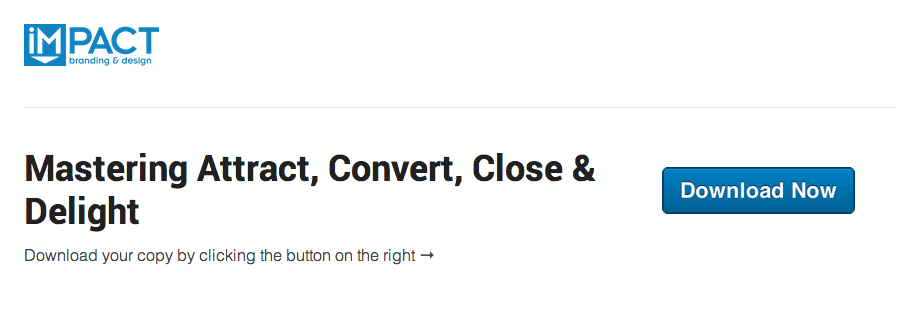
Since the content you gated relates to the problem you can help this prospect solve, this individual can be considered a lead. They’re not sales ready, so don’t go calling them right away. But continue sending them valuable information. Remember, it may take 10 pieces of content from you before they trust you and want to talk to you.
Oh, one more tip: Include calls to action to your consultation page and other landing pages you have in your gated content where appropriate. For more tips, see the “Ready to get More Advanced?” section at the bottom of this article.
6. Improve Your Homepage Message by Starting with the “Why”
This is probably the simplest thing you can do to generate quick results. Make sure your homepage is delivering a clear message to your prospects and guides them into your story. The best way to do this is to start with the “Why.” Your purpose, your cause or your belief. Why does your company exist? Why do you get out of bed every morning? And why should anyone care about you? Simon Sinek explains this best.
Here are some homepage examples that do this well:
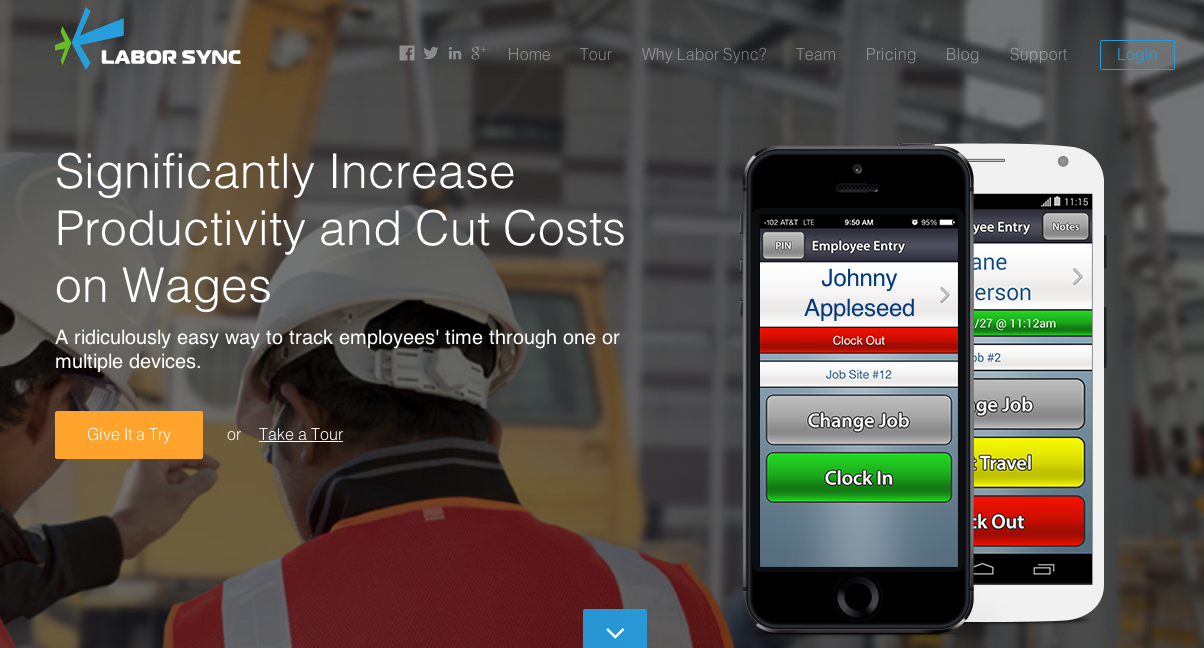
Laborsync - https://www.laborsync.com

Goodlife Assets - https://g-las.com
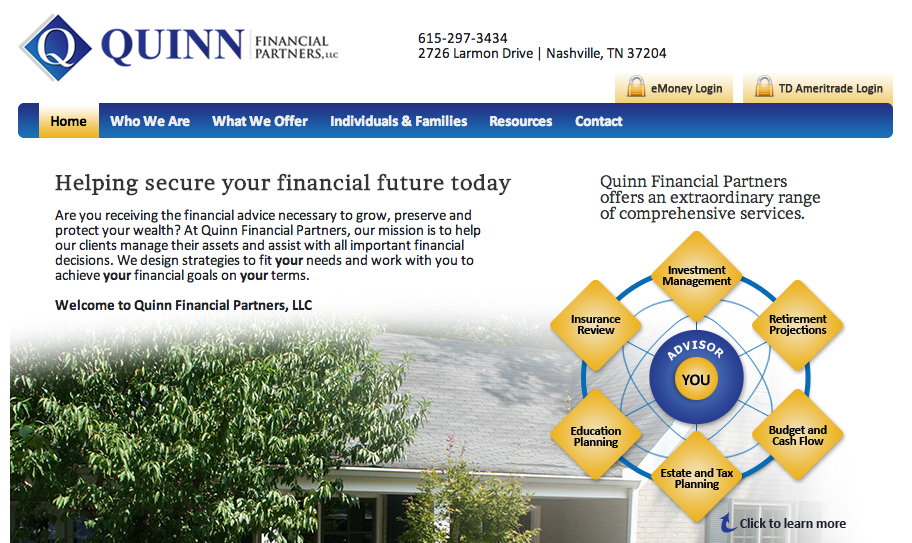
Quinn Financial Partners - https://quinnfinancialpartners.com
7. Improve Your Basic SEO
We all want to drive tons of traffic to our website. Search engine optimization (SEO) is a great way of doing this.
In the most basic terms, if you want to rank for a particular term, you need to optimize your website for it. You do this by implementing SEO best practices. Here are the areas where you do this on your website:
- Title tags, especially on the homepage and your most important subpages.
- URLs
- H1 tags
- Meta Descriptions
A few simple changes to your code can make a world of difference when it comes to driving traffic to your website from the search engines.
Doing the basics of SEO doesn’t require an expert. Here’s a beginner’s guide search engine optimization best practices.
If you don’t have the technical capabilities to update your own website, have your web developer implement these best practices.
Here are some examples of common SEO problems and how to fix them.
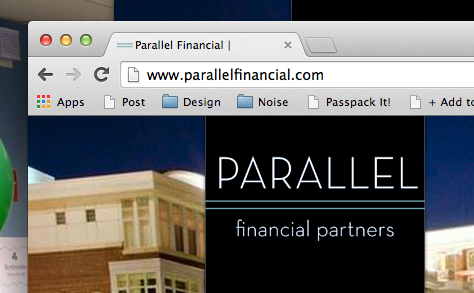
The title tag of this website is just the company’s name and then a pipe character. Parallel could benefit from optimizing this tag for search by changing their title tag to “Investment Management in Greenville SC | Parallel Financial.” Now, when a prospect is searching Google for the term “Investment Management in Greenville SC” or something similar, this site has a much better chance of showing up.

Sigmacapitaladvisers.com’s homepage also could use an optimized title tag, and they’re missing a meta description. Including a 165 character description of the company that includes the keyword they want to rank for would help improve the chances that this page is found in the search results.

Denk Strategic Wealth Partners is using a content management system (CMS) for their website. This will provide them with a platform that will help them easily manage their website’s content and publish new content without much technical expertise. However, their CMS has not been setup to produce optimized URLs (see the address bar.) This is normally an easy fix. A CMS like WordPress offers a feature to turn this on. Any web developer that has a focus on producing optimized websites can help you make this adjustment.
Also note that this page’s header has not been optimized. If they want this page to show up when a prospect searches Google, they would want to optimize the header for the keyword they want to rank for. I would suggest changing this header to “Retirement Planning Services.”

They did use the H1 tag for their header, which will help with the optimization of this page.
8. Identify Contacts and Past Sales Opportunities that can be Re-Engaged
One of the quickest ways to generate quick results is by re-engaging old leads and opportunities.
Here are some common reasons why lost leads may become opportunities again.
- They chose an alternative service provider over you and you need to follow up to see if they’re happy with that decision.
- They never chose a service provider, the timing wasn’t right then, but it may be now.
- You have new offerings that weren’t available when you last spoke to them.
- They weren’t educated enough to make a purchasing decision then, but now they are after consuming more of your content.
- They didn’t trust you then, they didn’t know enough about you.
Go find those contacts and start marketing to them again, but take your time doing this. If you identify a small list (say five people), re-engage them in a personal way in which two or three of them want to talk with you again, that’s a lot better than sending out a message to thousands of people, getting reported as spam from 5% of them, and having none of them want to talk to you.
If you’re using a CRM like salesforce.com or Infusionsoft, it’s easy to identify these contacts. If you’re not, this can be more tedious task. You may have to go dig through some old excel spreadsheets or emails.
9. Implement some helpful email marketing for your customers
Email marketing is always a touchy subject and I’m not the biggest fan of it. Mostly because I think many marketers abuse it. But when used correctly, email marketing is still a very valuable tool.
To introduce email marketing as a channel for moving leads through your sales pipeline or delight your customers, make sure you adhere to the following tips:
- Create marketing emails that you know the recipient will love. Share your blog articles, videos, and whatever content you are creating for them that will help them. Every email should be helpful and should excite the recipient, not confuse them on why they're receiving these messages from you.
- Be CAN-SPAM Compliant.
- Make sure your mailing lists are very targeted. That way when you send your message, you’re able to pinpoint the interests of the recipient.
- Keep your mailing lists small and send infrequently, especially in the beginning if this is your first time doing email marketing. You don’t want to suddenly overwhelm your sleeping database.
- Closely monitor the results.
- Check your analytics to see who is opening and clicking on the emails.
- Understand the content topics that your audience is enjoying and build more content around that area.
- Ask for feedback from those that are opening your emails. Ask them how you can help them more and make your content better for them.
- Remove people from the list who consistently don’t open your emails. You don’t want to harm your brand or email deliverability.
- Use email marketing tools like Constant Contact or Campaign Monitor when you are first getting started. These systems are very easy to use and inexpensive. As you scale your email marketing program, it may make sense to implement a more robust system, like HubSpot.
10. Create guest articles
Now that you’re able to create remarkable content, consider creating content and submitting it to other popular sites in your industry to expand your reach. Are you affiliated with any strategic partners? Do they have an audience you want to be in front of? Do they have a blog?
Here are some tips for creating guest content:
- Use your network to help make introductions. It’s not what you know but who you know. Using your connections to help you get introduced to a blog manager makes the process go a lot faster.
- Follow their editorial guidelines if available. Bigger outlets will most certainly have guidelines that will be strictly enforced.
- Make your author bio strong. Remember, you want to use your content as a channel to start developing relationships and trust with the reader / prospect. They need to clearly understand who you are.
- The stronger / more remarkable your blog title, the more clicks and social shares you will receive. This one is obvious.
- Don’t forget those calls to action.
11. Create a Helpful Youtube Video
I remember an experience I had where I had a client that needed help ranking in Google’s local results. At the time (back in 2011), optimizing for Google local wasn’t a specialty of mine. So when I was doing research online, I stumbled upon this video:
Immediately, the guy was speaking to my pain point. I saw him in the video and built a connection with him as he proved his expertise to me. This prompted me to look at the description of the video, learn more about him and his company, and I reached out to him. He got my business.
Just like creating helpful blog articles, create helpful YouTube videos. All it takes is a little time, a webcam, and a YouTube account. Don’t even worry about the quality, the information is more important than the presentation.
Here’s an example of a YouTube video from one of our clients:
Follow the same format as a blog article. In fact, to get more reach out of your video, transcribe your video and turn it into a blog post with the YouTube video embedded. Gary Vaynerchuk does this very well.
Don’t forget those CTA’s both verbally at the end of the video and in the video description.
12. Create a Free Educational Webinar
Another great way to show your personality, prove your knowledge, and generate leads is to run a webinar. Perhaps you already have a slide deck of a presentation you’ve done in the past and speaking is a strength of yours. Setup a landing page, drive some traffic to it, and get some registrants.
There are many platforms that you can use to run a webinar, like GoTo Webinar.
Here is an example of a financial planning webinar I found:
13. Implement Twitter as a Marketing Channel
Twitter is a great way to amplify your marketing message. In short, Twitter is a relationship building and relationship maintenance tool. The most obvious business use of Twitter is to meet potential customers and leads.
A common push back I hear is that the target prospect does not hang out on Twitter. This could be true, but I would argue that you can always find target prospects on Twitter. However, beyond just finding and engaging with prospects, Twitter can also help you:
- Track what people are saying about your industry.
- Share and promote content you‘ve created, including articles, webinars, videos, etc.
- Develop direct relationships with bloggers and journalists who can expand your reach.
Here are some real basics for marketing on Twitter:
- Craft attractive Tweets. Here are some tips.
- Share your content on a regular basis. Get into a routine and use a software like Hootsuite to help you schedule your Tweets.
- Follow users that either represent your ideal prospect or someone that influences your ideal prospect. If you follow them, they may follow back. Using a tool like Tweepi to find and follow users.
- Respond to all replies, mentions, and retweets in a timely manner.
- Use Twitter search to find users and tweets you can engage with.
Helyn Bolanis from Parlan Financial does a great job with her Twitter account.

14. Set goals
If you’re going to start creating content and putting effort into your inbound marketing, I highly recommend you set some goals. After all, you want to see results, right? Close your eyes and think, in a perfect world, what do want to achieve? A certain number of new customers? A dollar value for new annual or monthly revenue? A particular number of leads?
Now take that vision and make sure it’s SMART: Specific, Measurable, Attainable, Realistic, and Timebound. Write that goal down and don’t forget it.
15. Measure goals
Whatever goals you set, make sure you are tracking your progress. Simply track it in an excel spreadsheet or use a software if you want to be more advanced. Some goals may be simple to track, such as total number of new customers or total increase revenue.

Other goals may require you to use tools to help you track your metrics. For example, Google Analytics is an excellent, and free, tool to track traffic and conversions. If you don’t already have analytics installed on your website, what are you waiting for?
Before you get started:
- Identify what content creation types are easiest for you to produce and start there.
- Pick a few things and do them well. You don’t have to tackle everything on this list this week.
- Spend some time planning, but make sure you start doing. Planning becomes a lot easier when you have some data behind your decisions.
- Hire some help if you need it. Freelance content creation, graphic design, web development is more affordable than you may think. As you scale your program, you may even want to hire an agency to help you scale your program and your business.
Ready to Get More Advanced?
- Ramp up your blogging / content creation. The more you have, the better.
- Use auto-responder emails when someone fills out a form on your gated content. Thank them for the content and subtly add calls to actions to either more content or a consultation with you.
- Incorporate lead nurturing into your strategy. This is a great way to lead the prospect to even more content, keep them engaged in a timely manner, and help make them more sales ready.
- Consider implementing a marketing software to simplify these activities. HubSpot is an all-in-one inbound marketing software that offers tools for blogging, search engine optimization, social media, landing pages, email marketing, lead nurturing, contact database management, and so much more.
So what do I do now?
Get to work! Create some articles and start attracting prospects, converting leads, closing business, and delighting your customers.
If this is over your head or you just don’t know where to get started, let me know. I'm willing to speak with you one-on-one to understand what you're trying to achieve from your website. Just fill out the form on our free consultation page (see what I did there?), and I’ll be happy to help you set some realistic goals and lay out a roadmap for getting started.


Order Your Copy of Marcus Sheridan's New Book — Endless Customers!


